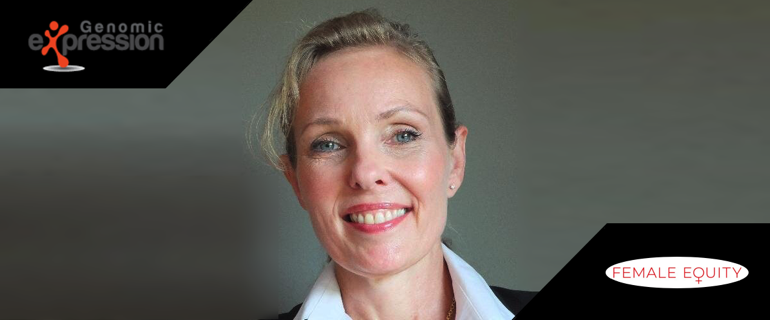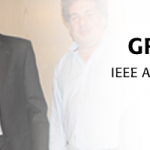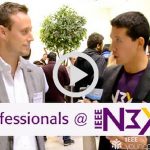Gitte Pedersen Genomic Expression & Female Equity
Gitte Pedersen discussed with IEEE the founding of Genomic Expression and described her effort as that of an “opinionated scientist with a mission to cure cancer.” Pederson also goes in-depth during the interview on her role as co-founder of the mission-based Female Equity nonprofit to “provide Female Founders equal opportunity to funding.” As Pederson and her co-founder, Ya Khalil PhD, say, “There is no glass ceiling in a house you build yourselves.”
What inspires you to keep going in the face of challenges?
Gitte: I must somehow enjoy challenges. I find challenges exciting. Otherwise, I would have focused on other things that are much easier. To summarize, the essence of success is enjoying challenges.
Tell us how you came up with the idea for your company Genomic Expression?
Gitte: I felt the pain of having two parents diagnosed with cancer within a very short time frame. My parents were facing what I call evidence-based death. It’s a bit of a curse if you are good at numbers. We knew the probability of their survival was practically zero which is where the term evidence-based death derives from.
Prior to this I got into science because I was interested in genomics. I have a degree in chemical engineering. My brother, Morten Pedersen, who is also a co-founder of Genomic Expression, has a PhD in genomics. We started to speak to many friends and colleagues in the industry. I sat down with Jesper Zeuthen, who is the “grandfather” of the Danish biotech industry and a pioneer in oncology. He started many incredibly successful companies such as GeneMab. Based on that conversation, we realized that we needed to analyze the tumor for growth drivers and find drugs that could target those specific drivers.
The second layer is understanding the concept of RNA because it codes for proteins and proteins are targets for drugs. Therefore, if we were able to measure the RNA using next-gen sequencing, we would have a very powerful platform to achieve our goal of finding better treatments, or treatment options, for patients who would not survive if they were treated according to the current standard of care. Today only 1 out of 4 cancer treatments actually prolong life, so this is not a small problem.
Can you explain the technology behind sequencing RNA? I understand your goal is to identify the best drug for the patient and the best patient for the drug. Why is this important to the technological world and how is it relevant to the typical populace?
Gitte: Simply put, RNA is coding for proteins and proteins are targets for drugs. We are just analyzing this on the coding level. The technology works by focusing on how much RNA is found in the tumor tissue. We already knew that if you have an overexpressed RNA, chances are that the protein level is also higher. In the case with Her2 and the breast cancer drug Herceptin, when Her2 is high, the chances of the drug working is also high. We took this concept and put it on steroids. We decided to measure all mRNAs at one time, i.e. everything that codes for protein.
Furthermore, the reason we decided not to use panels is because panels only measure on smaller subsets of genes e.g. 100 out of 20,000. Finally, DNA panels are primarily detecting mutations which is not necessarily what drives the cancer to grow. This is a key difference because we are not focusing on mutations, but rather RNA. We are focusing on the expression level and then comparing that to what is typical, or normal, which allows us to see particular growth-related pathways. This allows us to understand what makes a specific tumor grow and then connect that info to drugs that inhibit the growth.
We had to do a few things to make it scalable. For example, all tumor tissue samples get embedded in paraffin which destroys RNA. That is because doctors are still diagnosing cancer by looking at colored cells on a slide of glass under a microscope. It took us around a year and a half to get the entire process down. We have now proven that we get the same quality data as FFPE and as you do with fresh frozen tissue.
At the backend of all this is bioinformatics. We had to scale the backend of bioinformatics. Otherwise, it would take too long to analyze the information. We also had to build multiple databases and create a database infrastructure to analyze the data.
What do you think your most important piece of advice would be to a young technological entrepreneur?
Gitte: Find a big problem that you care about. Doing startup is not easy. There are a lot of ups and downs and it is not a typical 8:00 – 4:00 job. I never really had a job, as it doesn’t feel like a job because I love what I do. This is important because you have to put in a lot of effort; which is easier to do if it is something that you enjoy.
How do you think “The Real Reason Female Entrepreneurs Get Less Funding” and other similar efforts are affecting the landscape for female entrepreneurs?
Gitte: When we look at the numbers, I scratch the back of my head and conclude something is weird here. As I said, I am a data-driven person and all you have to do is look at the numbers. Almost 30% of founders are female. Last quarter female founders on the East Coast got 14% of the VC series A funding. However, on the West Coast, that number was only 8%. That is only 50% and 25% compared to the number of female-founded companies.
I recommend watching Dana Kanze’s Ted Talk where she explains how she analyzed data from TechCrunch pitch competitions including Q&A videos. She is a researcher at Columbia University who developed a natural language algorithm which she used to analyze the videos. Female and male founders are pitching the same way. The difference was in the Q&A sessions. Female founders were being asked prevention questions to a significantly higher degree. Prevention questions are based around what can go wrong. While male founders were being asked promotion questions. Promotion questions revolve around how much something can grow. If you answer a prevention question with a prevention answer, you will never get the check.
What does this tell you? This shows that the investors do not have the same level of comfort/confidence in female founders. This also shows that investors do not believe that women are on the same playing field or that they do not have the same capabilities as men.
However, there is a solution. Investors need to realize that there is unconscious bias. They need to take a moment to realize this and what it means for the individual and for the company. I am not asking for any handouts here. Morgan Stanley determined that the US economy is losing 4.4 trillion dollars a year because we are not funding females. We can fix this by making this unconscious bias into a conscious bias through talking about it.
The Female Equity network helps to balance out the disproportion caused by unconscious bias. This gives female founders the opportunity to discuss with other female founders which approaches are more effective. They even discuss which funds are interested in working with female founders. I cannot stress this enough. This is a business opportunity, not a hand out. Investors invest in you because they want a return. Therefore, the network helps match up the right fit. This is a realistic approach to the issue because it is capable of producing results. In addition, there are so many networks that exist that help people with specific needs, i.e. CEO founders. This creates a network specifically for female founders to discuss specific issues that are pertaining to specific agendas. This is relevant especially when considering that current data suggest that a gender bias is still a relevant obstacle.
The Female Equity network is also a lot of fun. I rarely do things because I have to. Networking should be fun. I don’t necessarily want to always have to go to a bar to network. I’m very active. I like sports, skiing, surfing, and paddle boarding. So, why not do something fun together? Options are provided that are ways to get to know people that isn’t in a bar. This is positive and important because your relationship with each investor is a partnership; they are as close as you can get to a marriage. You have to get to know people and be comfortable to work with them. These activities are great ways to do this.
What else can be done to help balance the disproportionate amount of funding amongst varying genders?
Gitte: I think you have to look at it as an opportunity. I never felt that I was a victim of discrimination or anything of that sort. I want to pitch this to investors as an opportunity to invest in really strong, capable entrepreneurs that happen to be women.
What has been your most rewarding experience?
Gitte: If you look at my management team, we are a bunch of nerds. When we started to analyze real patient samples and understand the level of impact this data could have, it was a humbling moment and a big moment for the whole team.
If you could go back and do it again, what would you change or do anything differently?
Gitte: There are always little things you can improve on. For example, as a founder, there are aspects of how you implemented or how you hired that could have been done differently. You’re never going to be in a situation and do everything perfectly, and that isn’t the point.
The point isn’t to be perfect, because nobody is. I did not have the experience when I first started. However, if I started a new company, I think I would make more money earlier and grow it faster.
There are so many other ways to leverage the know-how you have to help others become successful, which are also very gratifying. The concept of the serial entrepreneur comes from the idea of getting better as you gain practice. You could focus on mentoring others. You could even do what I’ve done personally which is to invest in other female founders.
I think that the most important thing is that data speaks its own language. As a scientist, I look at data and when it comes to cancer survival, I’m very hopeful that we are going to completely change that.
The same thing applies to the challenges with Female Equity. We are going to change that. I was invited to speak at the European Commission, as I received a grant. I was one of the 68 women out of 1000 applicants that received a Horizon2020 grant. They decided to invite all of these women to the event so we could all process, talk about why that was, and how we got there. What was really interesting to me was that all of these women founders were addressing very important issues. There are two components to the downside of this. One, being the business component, of missing out on 4.3 trillion dollars in the US economy. Second, there are so many solutions that won’t come to fruition that help everything from health, education, and environmental issues. All 68 companies were addressing something on the list of the UN’s sustainability goals. We are going to lose something if we don’t figure this out.
Is there anything else you would like to add?
Gitte: Communication is the most important skill if you want to be an entrepreneur; and other key elements are analytical capability and a lot of persistence. Communicating with investors was something I had to learn. I went out and raised money from angel groups and individual investors. I had to convey my research/plan to people who didn’t necessarily have a degree or experience in the healthcare industry. You have to be able to communicate what you do and in addition, the investor ROI, in order to get investors to back you. In the end they place a personal bet on you. So, if you don’t feel that connection during your meeting(s), then don’t waste your time.






